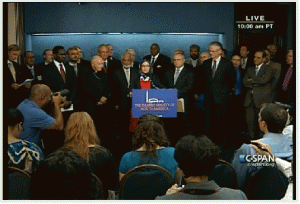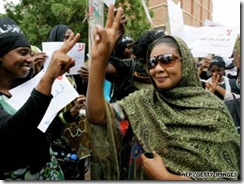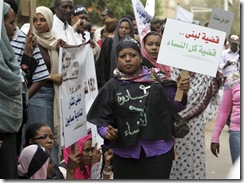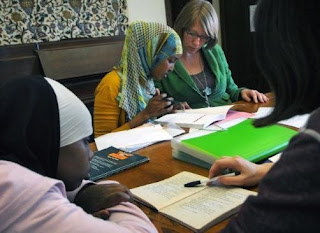 A week ago, amidst rising anti-Muslim anger,
A week ago, amidst rising anti-Muslim anger,
The Evangelical Lutheran Church in America (ELCA) joined a coalition of Christian, Jewish and Muslim leaders to denounce rising anti-Muslim rhetoric and bigotry in the United States, as the country prepares to commemorate the ninth anniversary of the Sept. 11, 2001, terrorist attacks.
Read the full article here.
Pastor Stephen Bouman once served as bishop of the Metropolitan New York synod of the ELCA. He currently serves in a leadership position of the ELCA Churchwide offices. I met Pastor Bouman earlier this summer when he attended the biennial convention of Lutherans Concerned North America. During that event, he delivered the sermon at the Goodsoil service at Central Lutheran Church in Minneapolis.
With a hat tip to Pastor Clint Schnekloth of Stoughton, Wisconsin, who blogs at Lutheran Confessions, I reprint the September 11th retrospective sermon of Pastor Bouman.
“You shall be called repairers of the breach, restorers of streets to live in.” Isaiah 58:14
This morning, nine years later, at 8:46 am., the time of the first attack, I do what I have done every year since that day. I listen to Brahms Requiem. I am quiet. I remember. Later tonight, I will listen to Bruce Springsteen’s album, The Rising, and toast the end of the day and the new day to come. I am still haunted, as if it were yesterday, by the images, the smoke rising downtown, visible from my office window. The second plane roaring down the Hudson right past our office. The stricken looks on hundreds of people’s faces as we gathered for prayer at noon at the Interchurch Center in Manhattan. I remember dialing the phone frantically, trying to find family, pastors, those we knew who worked in the towers. I remember the collision of feelings and images, the helplessness, the growing terrible panic, best described by this line from Leonard Bernstein’s Mass: “how easily things are broken.”
In the petty squabbles over who can pray at Ground Zero, in the self righteous cruelty of a so-called religious leader threatening to desecrate the resting place of thousands of our neighbors and particular people I have loved by burning a book holy to billions of our neighbors on this planet, I am overcome with anger and powerlessness. Even the good name of the faith I hold dear, is trashed and desecrated at Ground Zero.
I have different memories of this sacred space of obscene suffering, yet sacred struggle. And I have different memories of who should be able to pray where and why.Two things come to mind and I offer them today. First, when the towers fell, we in New York did, by instinct, what people did all over the world. The spiritual dna hardwired into what it means to be human expressed itself naturally and deeply. We prayed. We prayed together. We prayed in as wide a way as possible. We wanted to talk to our Maker, and wanted the comfort of human solidarity. St. Augustine was right: the soul was made for God, and will not find its rest until it rests in God.
Peter DeVries put this prayerful solidarity beautifully in his book “the Blood of the Lamb”:
“the recognition of how long, how very long, is the mourner’s bench upon which we sit, arms linked in undeluded friendship-all of us, brief links ourselves, in the eternal pity.”
On Wednesday evening, September 13, there was an emotional reunion of religious leaders in New York City at Abyssinian Baptist in Harlem. Pastor Calvin Butts, chair of the Council of Churches of the City of New York had put the interfaith service together. Imams, rabbis, pastors hugged and shared news of loss and nascent efforts at response. As we walked together toward the sanctuary I saw the bright television lights and Robin Williams of Good Morning America interviewing Don Taylor, the Episcopal bishop who is vicar for New York City. We were funneled in that direction by the tv flacks. I just continued to walk toward the sanctuary, empty of any wisdom for the next day’s breakfast. The singing at the liturgy was powerful, the remarks by leaders moving. As I gave a brief homily it occurred to me that Dietrich Bonhoeffer had preached from this pulpit for his friend Adam Clayton Powell. Bonhoeffer himself was a victim of bogus Christianity, a twisted version of spiritual warfare. Later, on the street, I saw some members of our synod and we embraced. I cried for the first time. Prayer enabled that.
Second, Ground zero became a house of prayer for all people. I often saw the holy respect for life at that awful place. When word began to circulate that human remains were found, the word would spread quickly. People would stop what they were doing. The site would gentle down to silence. Hats were removed. People knew that this was holy ground. One of the fire fighters in whose memorial I had participated, was lifted from the ground by his father and brother, both firemen. How dare anyone politicize, pontificate, harass or demonize the prayers of anyone near this sacred site! “My house will be a house of prayer, but you have made it a den of robbers,” said Jesus at another sacred site.
I am remembering that Muslim and Arab neighbors in Brooklyn brought their children to Salaam Arabic Lutheran Church and our neighborhood Lutheran schools for safety. I am remembering that for every broken window or graffiti covered wall of an Arab establishment there were a hundred flowers.
As I watched this morning the names of our brothers and sisters being read at Ground Zero I am proud of my Lutheran family and how we served together with many interfaith and public and private efforts. Our collective work of disaster response started the association of victim’s families. As the last faith based group still attending to 9-11 for the past several years, LDRNY accompanied the families at this sacred space on every anniversary, a “house of prayer for all people.”
For me, this day will always be a day of Lamentations. Kathleen O’Conner put beautifully the deep meaning of lamenting our losses.
“Lamentations is an act of resistance. It teaches us to lament and to become agents in our relationship with God, even if our fidelity only takes the form of telling God and one another our truth….Lamentations crushes false images, smashes syrupy pictures, destroys narrow theologies. It pours cold water upon theologies of a God who prospers us in all things, on a God who cares only about us, on a God who blesses our nation and punishes our enemies, as if we were God’s only people.”
Our Lamentations are not the isolation and depression of wounded entitlement or private grief, but the community at the foot of the Cross moving outward in solidarity and love toward the sorrow of the world God loves.



